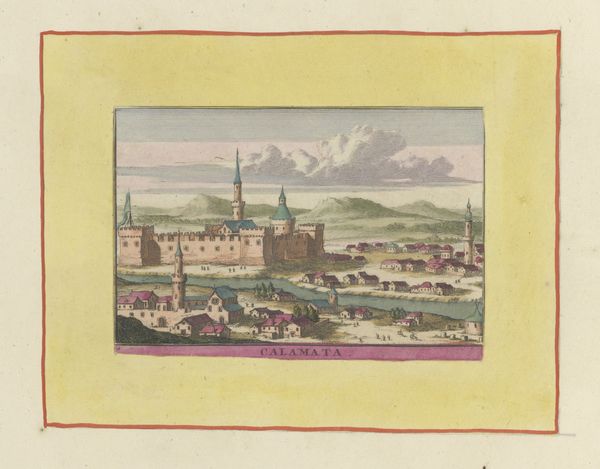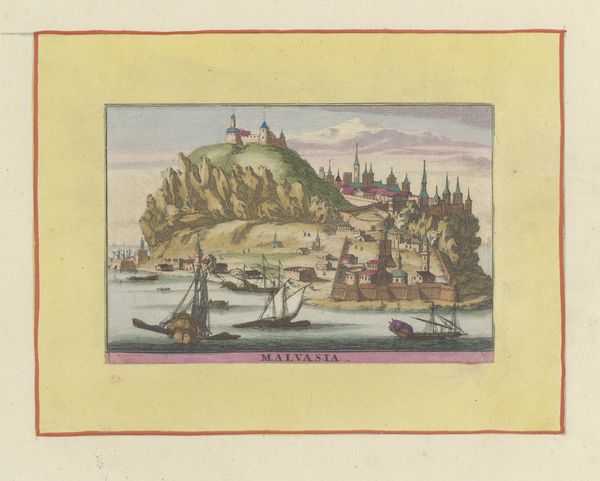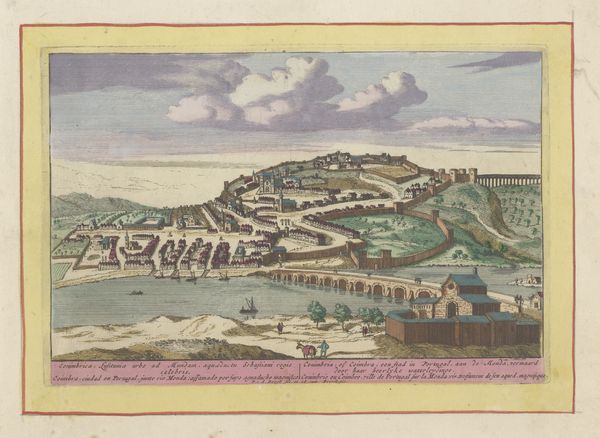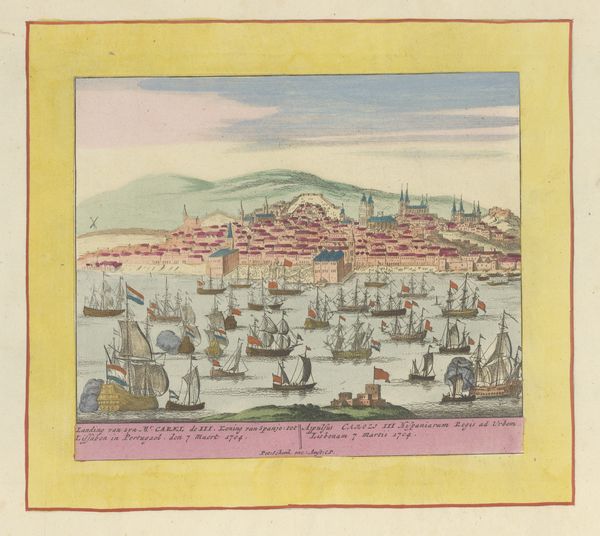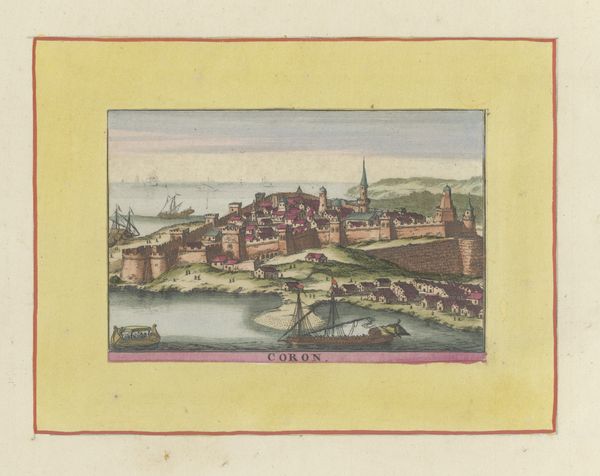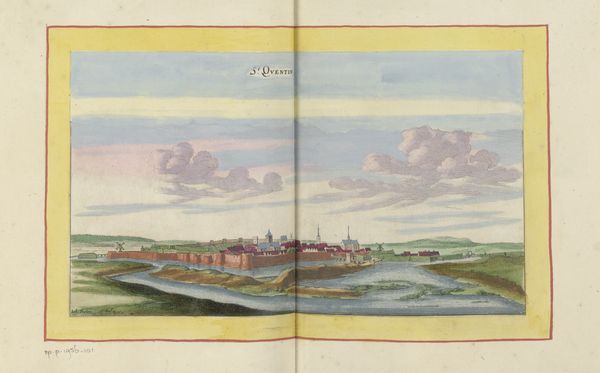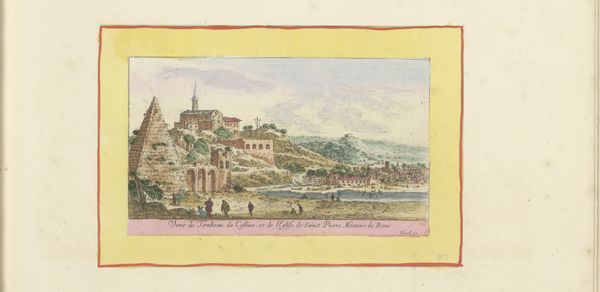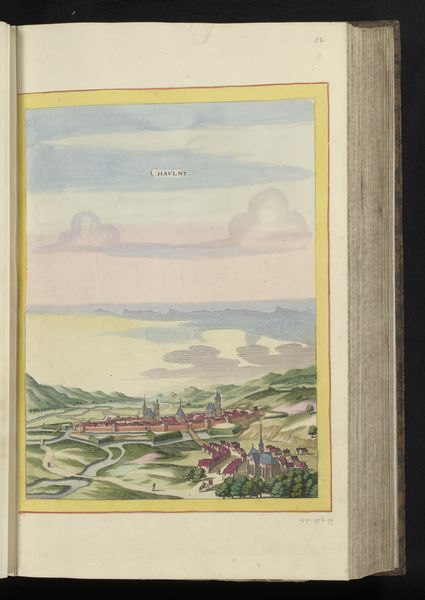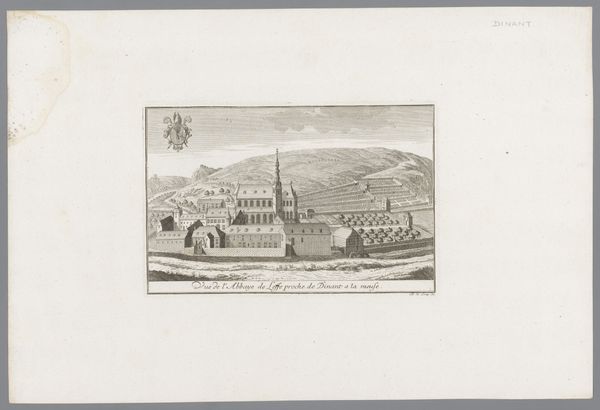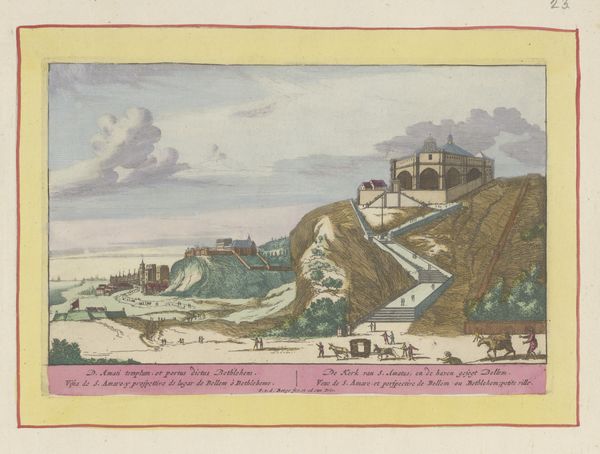
painting, watercolor
#
water colours
#
baroque
#
painting
#
landscape
#
watercolor
#
coloured pencil
#
cityscape
#
genre-painting
#
watercolor
Dimensions: height 93 mm, width 137 mm
Copyright: Rijks Museum: Open Domain
Editor: This watercolor, "Gezicht op Pylos," possibly made between 1679 and 1717 by Willem Swidde and held at the Rijksmuseum, gives a sort of bird’s-eye view of the city, which seems both fortified and somehow serene. With the ships firing cannons in the harbor it also seems that something dramatic is unfolding before our eyes. How do you interpret this work? Curator: This piece is fascinating, isn't it? Beyond the surface depiction, I see layers of cultural memory embedded within the visual symbols. The cityscape itself, meticulously rendered, evokes the idea of a constructed identity, a civilization asserting its presence in a specific place. It almost echoes the mythical founding of cities – a ritual act of claiming territory. Editor: That’s interesting… I was focused on the details, like the plumes of smoke and the little figures, but I hadn't considered that idea. Curator: Think of the choice to depict a harbor city. Water, historically, is both a connector and a divider – a gateway to trade, knowledge, and expansion, but also a route for invasion and conflict. Doesn’t that duality seem captured in the rendering of the battling ships alongside the imposing yet static, protected cityscape? It makes me think, too, about how genre painting such as this one often encodes the political situation through the quotidian lives depicted, even though on its face this artwork just seems like a documentary depiction of the city? Editor: I see what you mean. It’s not just a pretty picture; it’s layered with ideas about power, conflict, and the idea of civilization. Curator: Exactly. Even the artist's choice of watercolor contributes. Watercolors tend to suggest vulnerability and ethereality because the pigment is so translucent. Considering its long presence as a key stopover along important Mediterranean trade routes and repeated battles around it, Pylos—now, called Navarino—seems to stand at a tenuous historical crossroads in this depiction, and is marked by both its beautiful cityscape and these skirmishes at its borders. Editor: Thanks, I'll definitely think about landscape painting differently from now on. Curator: It’s exciting to explore the depths of visual culture together.
Comments
No comments
Be the first to comment and join the conversation on the ultimate creative platform.
